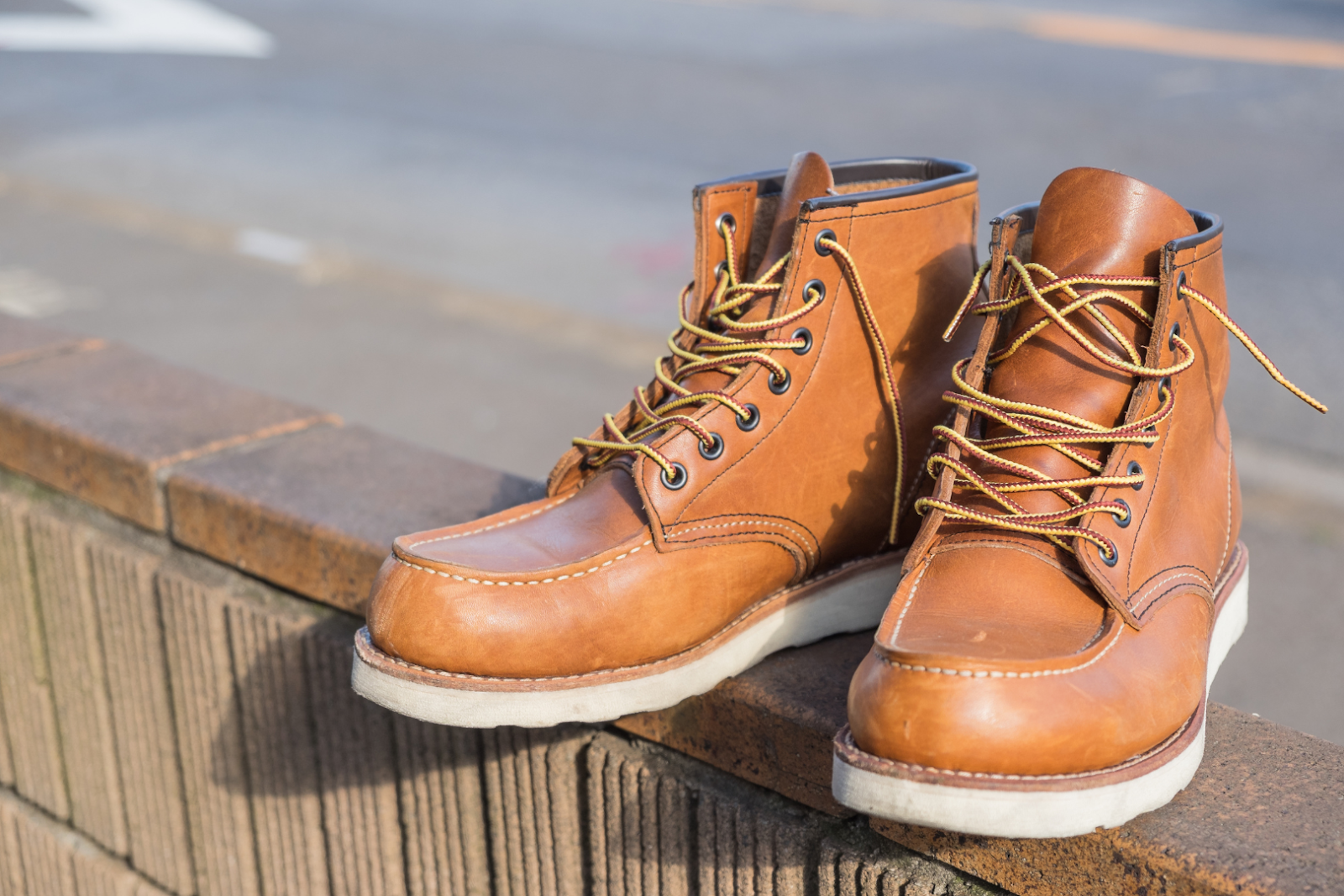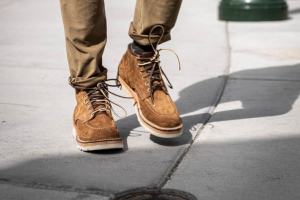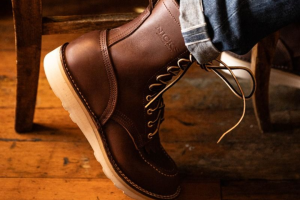Heritage Boots: How Should They Fit

Key Takeaways
- Understanding Fit and Comfort: Discover the importance of finding the right fit in heritage boots, including how they should conform to your foot over time for optimal comfort and style.
- Authenticity and Craftsmanship: Uncover the significance of authenticity in heritage boots, from traditional construction techniques to the use of high-quality materials, and why this matters to enthusiasts.
- Maintenance and Longevity: Gain insights into the proper care and maintenance of heritage boots, ensuring they not only look great but also last for many years, maintaining their charm and functionality. To keep your boots in top condition, consider using Nicks Boots Boot Care products.
Heritage boots go beyond being just shoes; they're a nod to lasting craftsmanship and classic style. They come from a tradition of hand-making, earning their place as essentials for those who care about looks and long-lasting wear.
Each pair showcases the care and skill of its maker, with every stitch showing a commitment to quality.
Check out our Nicks Boots Heritage Collection today!
What Makes Heritage Boots Unique?
Heritage boots distinguish themselves through their exceptional craftsmanship and quality. Crafted often with high-grade materials like full-grain leather, they offer a level of durability and comfort that mass-produced shoes can rarely match. The construction of these boots often involves traditional techniques, ensuring not just longevity but also a unique, personalized fit.
Embodying this ethos of quality and craftsmanship are our Heritage Boots. Our AL64 Maker's Collection is a prime example of how timeless techniques and superior materials come together to create boots that are not only durable but also exude a classic style and provide a bespoke fit for each wearer.
Craftsmanship and Materials
The art of making heritage boots is a meticulous process, focusing on quality and attention to detail. The use of premium materials like thick leather, strong soles, and robust stitching ensures that these boots can withstand the test of time. This commitment to quality materials and craftsmanship results in footwear that not only looks better with age but also provides a unique comfort and fit that adapts to the wearer's feet over time.


Finding The Right Fit
Key Factors in Fit
When selecting heritage boots, it's important to consider several factors to ensure a proper fit. This includes understanding the boot’s sizing, which may differ from standard footwear sizes, and recognizing the shape and arch support offered by the boot. It's also essential to consider the boot's width and the type of socks you'll be wearing with them. These factors play a significant role in achieving the ideal balance between snugness and comfort.
Personalizing Your Fit
Heritage boots are known for their ability to mold to the wearer's feet. This process takes time and wear, allowing the leather to soften and shape according to individual foot contours. To personalize your fit, pay attention to initial comfort and any pressure points. Remember, a slightly snug fit initially can evolve into a perfectly molded fit over time.
Importance Of Authenticity
Authentic Design Features
True heritage boots are characterized by specific design features that have stood the test of time. This includes the use of traditional materials like high-quality leather, classic stitching patterns, and solid construction techniques. These features are not merely for appearance; they are integral to the boot's functionality and durability.
Why Authenticity Matters in Heritage Boots
The authenticity of heritage boots is a nod to their rich history and craftsmanship. Wearing authentic heritage boots is not just a style choice but a connection to a legacy of artisan shoemaking. Authentic boots offer a level of craftsmanship and durability that modern, mass-produced boots often cannot match, making them a worthwhile investment for those who value quality and tradition.
How To Measure Your Feet
Properly measuring your feet is the first step in finding boots that fit perfectly. Accurate measurements ensure that you select the right size, avoiding discomfort and the long-term problems associated with ill-fitting boots.
Step-by-Step Guide to Foot Measurement
Measuring your foot is a simple process that can be done at home. Start by placing a piece of paper on a flat surface against a wall. Stand on it with your heel lightly touching the wall. Mark the longest part of your foot on the paper, and then measure this distance. Repeat for the other foot as feet can be of different sizes. Use these measurements when selecting your boot size, keeping in mind that boot sizes may vary based on the manufacturer.
Understanding Boot Sizes and Shapes
Heritage boot sizes can differ from regular shoe sizes. It’s important to refer to the specific sizing guide provided by the boot manufacturer. Additionally, consider the shape of the boot, particularly the toe box and the instep, as these areas significantly affect comfort. Be aware that some heritage boots might require a break-in period to fully conform to your foot's shape.
Breaking In Your Boots
The process of breaking in your heritage boots is crucial for achieving the ultimate fit and comfort. Properly broken-in boots will conform to the shape of your feet, providing a personalized fit that enhances the wearing experience.
Initial Steps in Breaking In
Start by wearing your boots for short periods around the house. Pair them with the socks you intend to wear regularly. The boots will gradually begin to stretch and mold to your feet. If there are areas that feel particularly tight, consider using a leather conditioner to soften them. However, be patient; breaking in quality boots takes time and should not be rushed.
Maintaining Comfort and Shape
As your boots break in, it's important to maintain their shape and comfort. Use shoe trees when not wearing them to help retain their form. Avoid wearing them in extremely wet conditions during the break-in period, as this can alter the leather. Regular care, including cleaning and conditioning, will also ensure your boots remain comfortable and last for many years.


Care And Maintenance
Routine Cleaning and Care
Regular cleaning is essential for heritage boots. Remove dirt and debris after each use with a soft brush or cloth. For deeper cleaning, use a leather cleaner appropriate for the type of leather. Conditioning the leather is also important, as it keeps the material supple and prevents cracking. Use a quality leather conditioner, applying it sparingly and allowing it to absorb fully.
Long-term Preservation Tips
To preserve your heritage boots for the long term, store them in a cool, dry place away from direct sunlight, which can fade and dry out the leather. If you're not going to wear them for an extended period, insert shoe trees to help maintain their shape. Avoid exposing them to extreme temperatures and moisture, and consider waterproofing if you'll be wearing them in wet conditions.
Final Thoughts
Heritage boots are more than just shoes; they carry a deep tradition of craftsmanship and allow you to express your own style. What really sets them apart is how they fit you perfectly over time, becoming more comfortable and personalized with every wear.
This journey to the perfect fit, from getting to know your feet better to the leather softening up, is pretty special. It ends up feeling like those boots were custom-made for you. Choosing heritage boots over fast fashion is a way to opt for quality, care for the environment, and stick with a style that lasts.
For more insights and stories about the art and soul of boot making, check out our blog.
Read Also:
Frequently Asked Questions
Can heritage boots be resoled?
Yes, one of the benefits of high-quality heritage boots is that they can often be resoled. This is due to their construction method, typically featuring Goodyear welting or similar techniques that allow for easy sole replacement.
Are heritage boots suitable for all weather conditions?
While heritage boots are durable, their suitability for different weather conditions depends on the material and any waterproofing treatments. Some are better suited for dry conditions, while others can be treated to withstand rain and snow.
How long do heritage boots typically last?
With proper care and maintenance, heritage boots can last for many years, even decades. The lifespan greatly depends on how often they are worn and how well they are looked after.
Can I wear heritage boots for hiking?
Some heritage boots are suitable for light hiking, especially those with a robust build and good ankle support. However, they may not offer the same technical features as specialized hiking boots.
How often should I condition my heritage boots?
It's recommended to condition heritage boots every 3-6 months, depending on how often they are worn and the conditions they are exposed to.
Are there vegan options for heritage boots?
Yes, there are manufacturers that offer vegan heritage boots made from high-quality synthetic materials, catering to those who prefer non-leather options.
Is it normal for new heritage boots to feel stiff?
Yes, it is normal for heritage boots to feel stiff when new. They typically require a break-in period during which the leather softens and conforms to the shape of your feet.
Can heritage boots be customized?
Many manufacturers offer customization options for heritage boots, including choices in leather types, colors, and even specific design elements.
How can I tell if a heritage boot fits properly?
A properly fitting heritage boot should feel snug but not uncomfortably tight. There should be enough room to wiggle your toes, and your heel should not slip when walking.
Are heritage boots appropriate for formal occasions?
Depending on the style, some heritage boots can be quite versatile and suitable for semi-formal occasions. Boots with a sleeker design and finer leather can often be paired with business casual or semi-formal attire.




